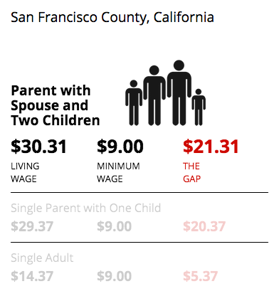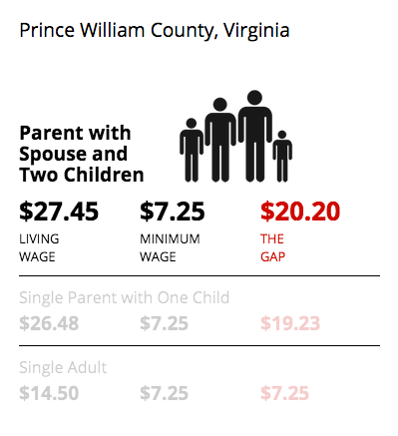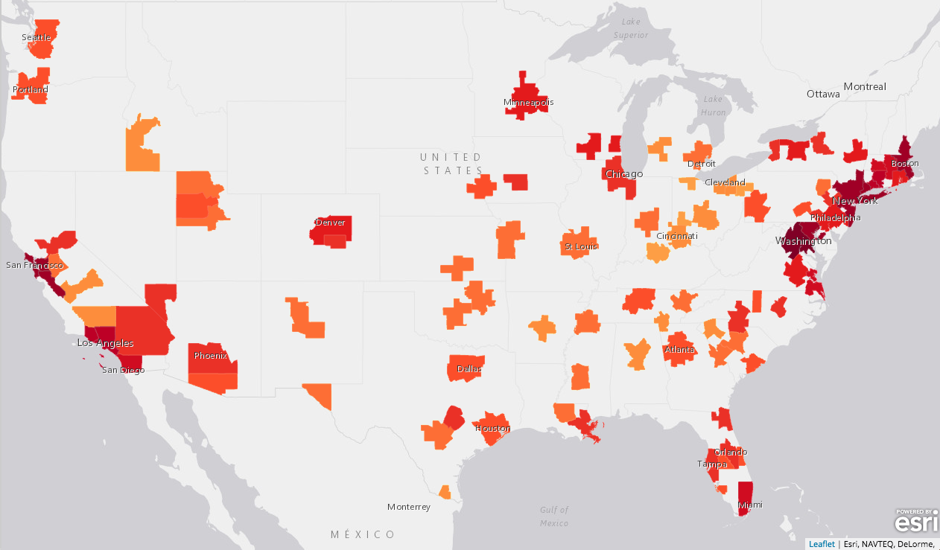The minimum wage peaked in 1968 at $8.54 per hour, after adjusting for inflation. The current $7.25 is far too low for the 3 million hourly workers who earn at or below that threshold, and certainly not at par with the wage hikes instituted by other countries with similar economic trajectories.
Here’s The Economist on America’s embarrassingly low minimum wage:
Given the pattern across the rest of the OECD, a group of mostly rich countries, one would expect America, where GDP per person is $53,000, to pay a minimum wage around $12 an hour. That would mean a raise of about 65% for Americans earning the minimum pay rate.
But while several states have higher local minimums (and some cities plan to raise them further), the U.S. as a whole is not where it needs to be. To visualize the problem, MIT has released a new tool called the Living Wage Calculator, which maps the difference between minimum wage and basic costs of living in cities and counties across America. The map shows that for most minimum wage earners, supporting their families is an enormous struggle.
To work the tool, you can choose three types of households: a parent with a spouse and two children, a single parent with one child, or a single adult. Once selected, the tool maps the difference between living wage (the cost of living required to get by) and minimum wage for this household. The darker red the county or city, the greater the difference.
Here’s the county map for households with one parent supporting a non-working spouse and two-children:

The entire map is fiery red; there isn’t a single county in which a minimum wage can match the local cost of living. In some counties, such as Marin County near San Francisco or Prince Williams County in Virginia, the breadwinner of this household would have to bring in upwards of $20 more per hour to support his or her family.


Things are tough for a single parent with one child, too. The living wage is higher than the minimum wage in every state. Not surprisingly, cities such as New York, Boston, Washington and Chicago—where housing and other expenses are sky-high—are stained the deepest red:

For single adults, the map shows that Washington State, where the minimum wage is $9.32, is a sort of living-wage oasis. It contains patches (in green) where the cost of living is actually lower than the minimum wage. Adults making the minimum in Pend Oreille County, for instance, bring in 65 cents more an hour than they need to get by.

The city map for single adults, however, shows that urban living is still far too expensive for low-wage workers, even if you don’t have dependents to support:
No comments:
Post a Comment